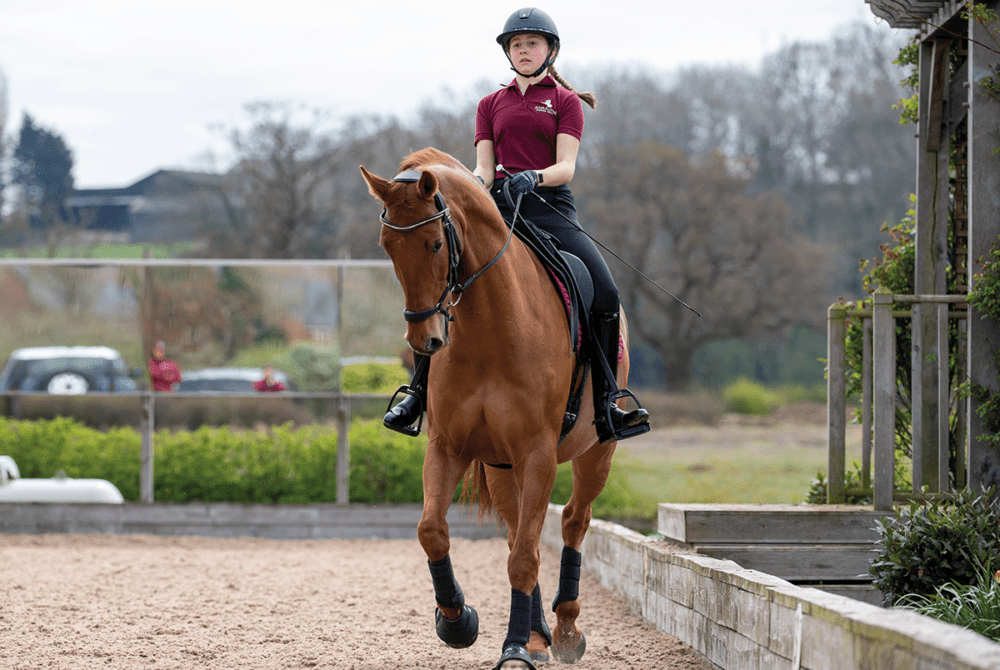Bend and balance
Posted 20th December 2022
Does a horse have to be naturally bendy to succeed in dressage, or can he become more flexible through training? This month, Gareth Hughes talks suppleness

Everyone has a different idea of what suppleness looks like. For me, it’s when a horse is equally flexible on both sides and has a feeling of softness when I ask him to bend. It’s important to remember that every horse, like every human, will be stiffer on one side of his body than the other, and some horses are naturally more flexible. Nevertheless, it doesn’t mean you can’t train your horse to become more supple through correct schooling.
In the second part of my series, I’m going to run through some simple but effective exercises you can do with your horse at home to help encourage suppleness through his whole body. With repetition, your horse will start to feel more balanced and supple, and look more beautiful when he moves. Now, let’s get to it.
Lovely leg-yields
Most of the exercises we do with our horses are easier versions of test movements and leg-yielding from the three-quarter line is a great example. Think about the line your horse is required to move on and the position he needs to be in to get there.
To ask your horse to leg-yield…
- Walk down the three-quarter line and look at the letter you want to move to.
- Place your weight on your outside seatbone to encourage him to step across with his inside foreleg.
- Move your hands slightly to the inside to encourage him to flex away from the direction that you’re moving in.
- Press with your inside leg on the girth to ask him to step sideways back towards the track, timing it so you’re pressing when he lifts his inside foreleg off the ground. Be sure to maintain this rhythm throughout.
Initial positioning is key, and takes time to perfect. Get it wrong and he may drift through his shoulder or lack bend through his ribcage, but with repetition you’ll start to build his suppleness and strength, enabling him to balance more easily to end up with the correct level of suppleness. It doesn’t matter if he leads with his shoulders or feels a bit wobbly at first. This exercise is designed to build suppleness gradually, rather than look picture perfect from the get-go.
Only do what’s required
Can a horse be too supple? This is a question I’m often asked and it’s important to remember that a horse only needs to be supple enough for the level he’s at. We don’t need him to ride down the centre line and touch his nose to your toe – that’s unnecessary. He needs to be able to balance and shape himself around your leg in the required amount of bend for the work he’s doing. At Prelim level, he’s expected to be able to produce a 20m circle in correct balance and with flexion, whereas at Elementary he must be able to do the same on a 10m circle.
Keep your horse as supple as he needs to be for the job in hand and the level he’s working at.
TOP TIP
A lack of suppleness can be linked to a lack of engagement and self-carriage, so make sure you factor some exercises into your horse’s regime that target sitting him on his hindquarters.
Find out more of Gareth’s top tips for achieving flexibility in February Horse&Rider – get your copy today!











